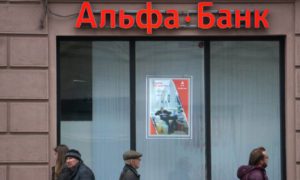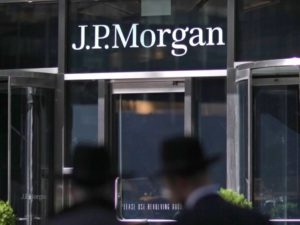
Kharkiv in August placed three-year E series domestic bonds for UAH 250 million maturing in 2022, Fitch Ratings has reported.
According to the report, the agency assigned the bonds a priority unsecured rating of “B.”
“This is the first tranche of a UAH 1 billion bond to be placed in 2019-2020. Another UAH 250 million tranche is planned for November 2019,” the agency’s report says.
The interest rate is 18% per annum, income is paid quarterly.
According to the decision of Kharkiv City Council of June 19, 2019, bonds worth UAH 1 billion of E, F, G, H series for UAH 250 million each are to be placed within two years.
E series bonds will mature on August 24, 2022, F series on November 23, 2022, G series on February 22, 2023, and H series on May 24, 2023.
“The purpose of the loan is to raise funds to finance the budget deficit for the development of the city of Kharkiv, including the construction and reconstruction of social and cultural facilities, transport infrastructure, roads and engineering facilities,” the decision reads.

The portfolio of government domestic loan bonds held by non-residents as of July 4 reached a new historical record high of UAH 60.12 billion at face value, including an increase of UAH 2.71 billion following the results of primary auctions conducted on July 2.
According to data released by the National Bank, the entire increase was traditionally provided by hryvnia securities, by UAH 3.91 billion, which total UAH 58.21 billion in the portfolio held by non-residents.
Such an inflow of funds from non-residents allowed the National Bank to buy out $52 million in the market after primary auctions on July 3, although the hryvnia exchange rate strengthened and for the first time since April 2018 it overcame the level of UAH 26/$1.
A week earlier, the portfolio of government bonds owned by non-residents grew by UAH 4.79 billion, but then a small part of it (UAH 390 million) was secured by equities in U.S. dollars.
In general, since the beginning of 2019 the portfolio of government bonds owned by non-residents has increased by UAH 53.77 billion, or 9.5 times.

ABH Ukraine Limited, the holders of 90.1% of shares in Ukrainian Alfa-Bank, has issued new two-year EUR 50 mln loan participation notes (LPNs), setting the coupon rate at 6.75% per annum with the quarterly payments.
The bank said on Thursday that the maturity date is July 6, 2021.
The bonds were issue under S Rules with listing on the Frankfurt Stock Exchange.
The bank recalled that the bond issue was the 16th issue by ABH Ukraine since early 2015.
As reported, at the end of October 2016, the operation was completed on the transfer of 99.9% of the shares in PJSC Ukrsotsbank from UniCredit Group in favor of ABH Holdings S.A. (ABHH), whose main asset in Ukraine is Alfa-Bank, in exchange for a minority share of ownership in ABHH in the amount of 9.9%.
Currently ABH Holdings S.A. is consolidating assets in Ukraine, which will lead to the creation of the country’s largest private bank based on Alfa-Bank.

JPMorgan Chase & Co. directly lent around $350 million to the government of Ukraine on March 12, 2019, two weeks before the first round of the presidential election in the cash-strapped country, WSJ has reported, referring to people familiar with the deal.
WSJ said that the bank, declared the only organizer of the additional issue of 10-year loan participation notes (LPNs) of Ukraine, bought them itself, which is not a common practice.
The deal could deliver millions of dollars in gains for JPMorgan, which bought the bonds at a discount.
WSJ said that in the past weeks Ukrainian government officials met with the bond management funds in Miami and New York to unofficially discuss the issue of new LPNs, although investors called to postpone the sale of new LPNs after the election.
In this situation, JPMorgan offered Ukraine to add $350 million in eurobonds maturing in 2028 and sell them privately to the bank, people familiar with the deal told the publication. According to their data, the bank bought bonds at around 98.88 cents on the dollar and has started selling them to bond funds at around 100.50 cents on the dollar. If JPMorgan sells all the bonds at that price, it would make a profit of some $5.7 million on the deal, WSJ said.
According to WSJ, Wall Street firms from time to time made such transactions through the so-called proprietary trading desks before the 2008 financial crisis, but rarely did this later, since the new rules require them to be significantly redundant in such transactions.

The resumption of the interest of foreign investors to the hryvnia-pegged government domestic loan bonds is not yet brining risks for the country’s economy, according to members of the monetary policy committee of the National Bank of Ukraine (NBU).
“Usually, the risks associated with the inflow of short-term debt capital arise from its entry into the private sector with subsequent overheating of consumer demand. As for the capital inflows mainly in government loan tools, the risks of economic vulnerability are minimized. In addition, the inflow occurs in hryvnia-pegged loan tools that shifts currency risks to foreign investors,” the committee members said at a meeting, which minutes are dated January 30, 2019.
The committee members also draw attention to the fact that nonresident investment in government bonds remains insignificant relative to the total amount of government bonds on the market, and does not exceed the figures of the previous year. Moreover, thanks to the inflow of capital from nonresidents, the NBU has the opportunity of increasing international reserves, that is, creating a “safety cushion” in case of a possible outflow of capital.
As reported, nonresidents in January 2019, after six months of absence, resumed investments in government bonds. According to the NBU, since the beginning of the year as of February 11, the portfolio of government bonds owned by nonresidents more than doubled, to UAH 13.418 billion. At the same time, the total amount of government bonds issued by this date was UAH 758.182 billion, including the NBU owning securities for the amount of UAH 340.724 billion, banks – UAH 372.805 billion, legal entities – UAH 24.433 billion, and individuals – UAH 6.802 billion.

Several companies and banks are designing a mobile application for buying government domestic loan bonds, Head of the Depositary Operations Department of the National Bank of Ukraine (NBU) Andriy Suprun has said.
“I think that next year, perhaps at the beginning of the year, the purchase of government domestic loan bonds by individuals can occur in several clicks in a mobile application. Several market players are currently working on the creation of this solution,” he said at the annual Ukrainian Financial Forum in Odesa, organized by the ICU investment group.
Suprun said that the NBU, for its part, provides them with the necessary support.
“We are writing an open API [application programming interface] and allow everyone to get involved in this competition, to provide the corresponding service to the market,” he said.
In addition, the representative of the NBU said there will be an opportunity to submit brokerage applications in the primary government domestic loan bonds market in the near term.
“In fact, the next auction can take place with a possibility for any investor to submit applications to the Finance Ministry through primary dealers. This should improve the indicators of attracting funds, primarily from the population,” Suprun said.
In general, he considers these initiatives to be mutually beneficial for the state and the population.
“The state receives a resource, natural persons – a good percentage, almost tax free, in contrast to deposits, as well as a 100% state guarantee for any amount,” he said.